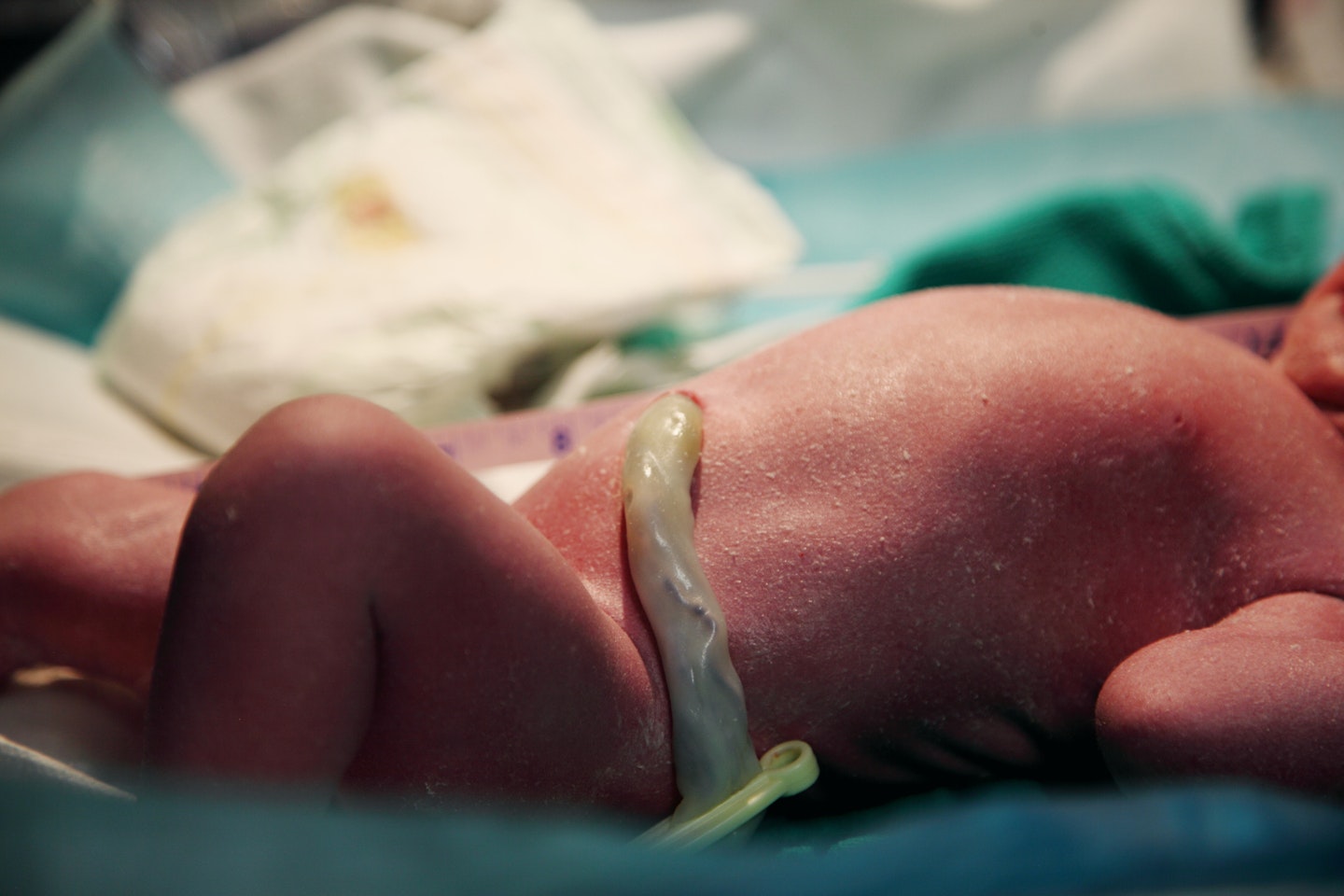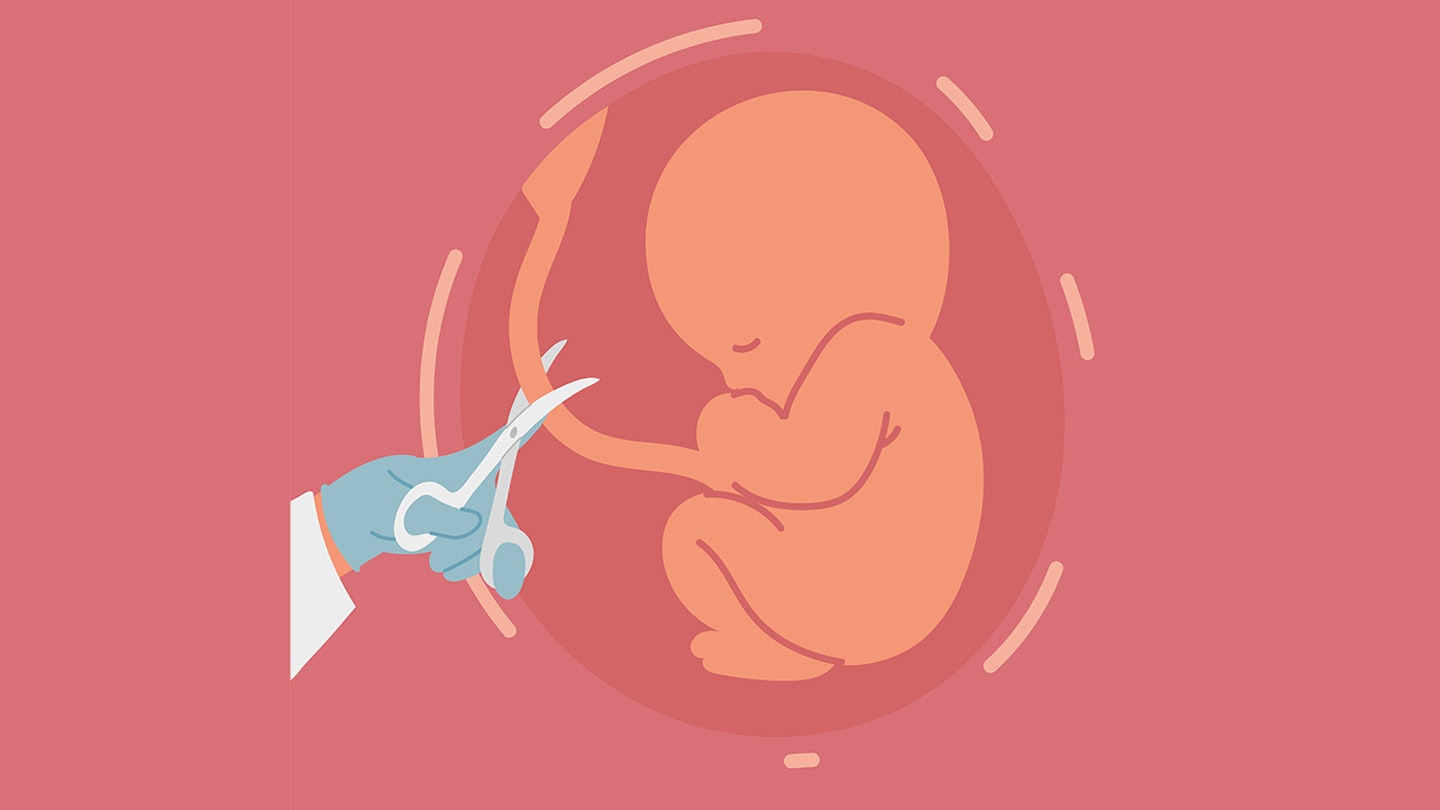The umbilical cord cutting is a special moment as it’s what’s kept you and your baby connected for the past 40 weeks of pregnancy. You may choose to cut the umbilical cord yourself, have your partner do it; a loved one, or just get your doctor or midwife to do it.
Rather than cutting the umbilical cord straight away too, some parents opt for delayed cord clamping, which is also known as ‘optimal cord clamping’. This is when you wait at least one minute before cutting the umbilical cord after your baby is born. The method is recommended by the World Health Organisation as safe and effective, and is believed to be better for your baby, rather than cutting the cord immediately after birth.
What is the umbilical cord?

The umbilical cord is a tube made up of two arteries and one vein, which is covered in a thick substance known as ‘wharton’s jelly’. It forms when you’re around five weeks pregnant and it serves as a lifeline to your baby. It transports nutrients and oxygen from you to your baby and passes back waste from the baby via the placenta.
It grows up to two feet long and runs from your baby’s belly button to the placenta. There may be some facts that you may not know about the umbilical cord too, for example some women donate it after giving birth as its blood is rich in stem cells which can help cure diseases.
How the umbilical cord is cut
You and your baby won’t feel the umbilical cord being cut. Whoever cuts it the process will be the same:
• Your doctor or midwife will make sure the umbilical cord has stopped pulsating
• Two clamps will be placed on the cord
• Whoever is cutting the cord will hold a section of it with a piece of gauze underneath it
• They’ll then be given a pair of sterile scissors and cut between the two clamps
When should the umbilical cord be cut?
Traditionally the umbilical cord would be cut immediately after you had given birth to your baby — whether that be a vaginal birth or C-section. However, new guidelines recommend a delayed umbilical cord cutting, where you wait a minimum of a minute before cutting the cord.
Delayed cord clamping, according to the NHS, can increase the amount of iron in your baby’s blood, which is essential for your baby’s brain development and neurodevelopment in later childhood. It also allows more blood to flow from the placenta, which keeps your baby’s blood pressure more stable once the cord is cut (which creates a sudden drop).
Your doctor or midwife may recommend you don’t have a delayed cord clamping if there’s concerns about your baby’s heartbeat or if they have breathing problems.
When is delayed cord clamping not recommended?
Although delayed cord clamping is beneficial in most situations, there are certain circumstances where it may not be recommended, including:
• If you’re bleeding heavily and are in need of immediate medical treatment
• If there’s a problem with the placenta
• If the umbilical cord is bleeding so the blood isn’t able to reach your baby
• If your baby is struggling to breathe and needs resuscitation
• If you’re having monochorionic twins then delayed cord clamping is not recommended. This is because the twins will share the same placenta and there is a risk that blood could move from one twin to another. If one twin has more blood than the other, delayed cord clamping could make the situation worse.
What to do with your umbilical cord
There are a few options for your umbilical cord, including the little bit that's still attached to your baby. However, you may just decide to dispose of it which is also okay.
Donate it
You can request through the NHS that you want your cord blood donating, as it can it can help to treat many serious conditions such as cancers and immune deficiencies. Not all cord blood can be donated, but it's worth checking with your midwife if you would be able to. There are only a limited number of NHS locations that accept donation.
You can also choose to store your cord blood privately for family in the future.
Box it
If you don't want to part with the umbilical cord clamp that falls off your baby's bellybutton, then you can keep it in a small keepsake box to put in a baby box of all your little ones things.
Plant it
Another option is to put it in some soil with a plant of your choice, that you can keep somewhere in the house or even in your little ones nursery.
Make a keepsake
Some choose to turn the cord into a piece of artwork, or have it put into resin to create a ring or necklace, or paperweight.
Whatever you choose to do with the umbilical cord cutting and clamp, make sure any donations are discussed and arranged before you go into labour and if you wish to delay the cord cutting too.
Samantha Ball is a Product & Lifestyle Writer for Mother&Baby and freelanced for the website for two years before joining the team full time. She's a mum of two and loves browsing for the best products and cute outfits.
